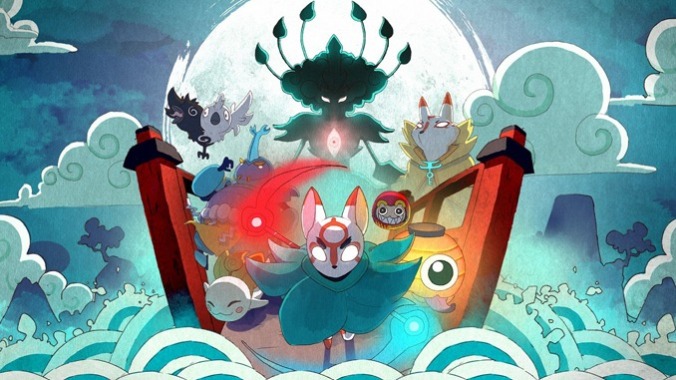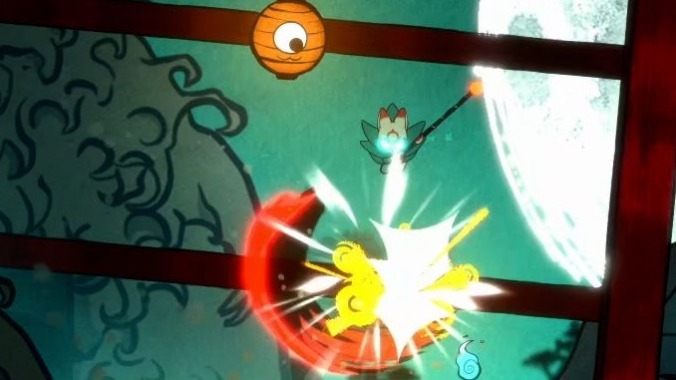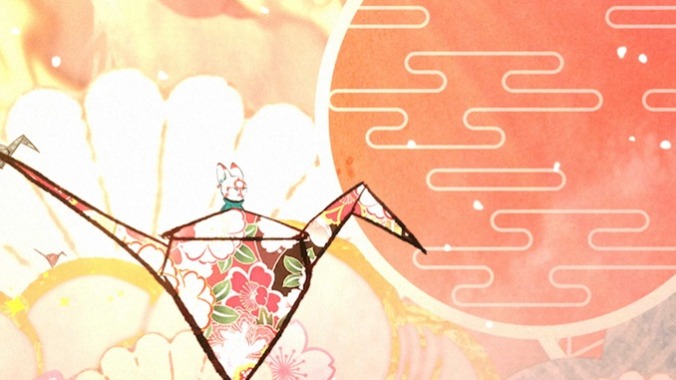Bō: Path of the Teal Lotus Is a Charming, Sometimes Messy, Love Letter

There’s a unique beauty to a love letter. Love is one of the remarkable symptoms of the human condition, yet each person’s recount of this feeling is wholly distinctive. Some may metaphorically describe an idyllic setting, time or place, while others will present the physical traits that accompany this sentiment. No two versions of love ever feel the same. A love letter then serves as a window not only into love itself, but how a particular individual feels it—what love is to them. We are able to glimpse an emotion completely familiar, yet entirely foreign. I think that is beautiful in its own right.
Calling Squid Shock Studios’ Bō: Path of the Teal Lotus anything less than a love letter does it a disservice. It’s a game that unabashedly wears its influences on its sleeve, pulling largely from the more modern ilk of Metroid-style games like Hollow Knight and Ori and the Blind Forest. Given the pedigree of talent at the studio, this makes sense: several team members were among those impacted by Nintendo’s DMCA takedown of a fan-remade Metroid II, chiefly Bō executive producer Milton Guasti, Another Metroid 2 Remake’s primary developer. Guasti’s talent was sought out for level design on Ori and the Will of the Wisps, bringing the history of the genre full circle to what Bō: Path of the Teal Lotus has on offer.
Players familiar to this style of game will immediately recognize its usual hallmarks. We control the titular Bō, a fox “tentaihana,” through a series of interconnected and diverse regions, everything from crimson bamboo forests to a bustling city inspired by Nara architecture. Through their journey, Bō obtains new skills or items that increase their strength and open new routes in the map. The focus is, as ever the case within this genre, on ability-enabled exploration that encourages backtracking.
Bō: Path of the Teal Lotus heavily emulates the formula found specifically in Hollow Knight—the inspiration is so striking that calling it a “clone” would not be a far stretch. Bō can equip charms (here dubbed “Omamori”) to provide perks that minimally alter the flow of gameplay, such as dealing more damage while at full health. Hollow Knight’s spells appear, retooled and expanded through the Daruma system— equipable dolls, each with their own unique effect. While pulling all of this inspiration, Bō never quite reaches the height of difficulty that Hollow Knight does. Whether through platforming sections, enemy design or boss fights, Bō is a much easier game, and this is a surprisingly welcome breath of fresh air. It provides a fair challenge while still remaining accessible to those not wishing to beat their head against their controller.

One of the high points comes in the form of its locomotion system, which pulls many pages from Ori and the Blind Forest. Bō uses a grapple mechanic to have players zip around levels, and it feels fun and fluid. There’s a heavy focus on staying airborne in combat, too. Maintaining an aerial combo allows Bō to enter the “Boiling State,” which amplifies Daruma spells and can synergize further with certain Omamori. It’s clear the game wants you to spend as little time on the ground as possible, and it rewards the player who takes to the sky. These mechanics form a sort of harmony with each other, and make for some truly exciting play.
It’s important to clarify what sets Bō: Path of the Teal Lotus apart from its inspirations, however—these are the distinctions that elevate it to this mythic love letter status. There’s no shortage of Metroid-style games specifically inspired by Hollow Knight (see Aestik, DEVIATOR, Constance, Phosfi, Mendacium, Crowsworn) and the memorability of many will bank on what innovations they make within the genre, or stand out for. The most stunning and memorable part of Bō: Path of the Teal Lotus, by far, is the art direction.
As the game opens, players are treated to the gorgeous hand-drawn cutscene initially debuted in Bō’s announcement trailer, and everything that follows is just as remarkable. Bō feels like an homage to Japanese ink brush paintings, and this registers as vastly more recognizable than games that try to emulate the art of Hallownest. A level at the very end of Bō’s journey was so deeply enchanting that I think it’ll stick with me always. The reverence and admiration for traditional Japanese art—in combination with the admiration for its inspirations—are what makes Bō: Path of the Teal Lotus a true love letter.

The somewhat disheartening thing about love letters, though, is that a soul bared open also shows its warts. Bō: Path of the Teal Lotus has its share of these, and some are too big to be glossed over. While the locomotion system is fun and fluid, this applies only when it works as intended. The grapple is reliable a large majority of the time, but can occasionally fail—the correct button can be pressed in the correct timing window, and nothing will happen. This is most significant in the boss battles where grappling is a required tool, and failing a grapple means potentially failing the fight through no fault of your own.
I can’t address my biggest issue with Bō without risking spoilers for a near-endgame boss; I will tread as lightly as I can here, but read the following paragraph at your own discretion.
Without revealing too much, there is a “boss-as-a-level” style encounter towards the end of the game, where the boss fight is more or less a tense action platforming sequence. In theory, this makes for an exciting moment where the player dashes Bō through a gargantuan foe, but the execution falls incredibly flat and creates the most frustrating part of Bō. This is one of the times that the locomotion system seems unresponsive, and the path the player is meant to take isn’t intuitive or well-marked—things the player absolutely needs in order to succeed. After struggling with this sequence for over an hour, I almost dropped the game entirely, which would have been a shame. The best parts of Bō: Path of the Teal Lotus come afterwards. It isn’t hard to imagine some players calling it quits because of this moment, or persevering only with the aid of a walkthrough.
If it wasn’t for these pain points, Bō would be a game I wholeheartedly recommend to any fan of Metroid and its ilk, but they currently stand as severe detriments to the overall experience. I hope they’re things that can be ironed out with patches, because Bō: Path of the Teal Lotus is positively dripping with love for the genre and deserves to be acknowledged for what it brings forth—not the concessions I must make regarding it. It took me roughly 16 hours to reach 100% completion, and I enjoyed 15 of those hours greatly. A brief conversation I had with someone on the marketing and community side of Squid Shock Studios vaguely pointed towards even more secrets to uncover or future content planned for the game, and I will likely jump back into Bō: Path of the Teal Lotus to experience those myself when and if they happen: but only because I know the worst is behind me.
Bō: Path of the Teal Lotus was developed by Squid Shock Studios and published by Humble Games. Our review is based on the PC version. It is also available for the Switch, Xbox Series X|S, and PlayStation 5.
Perry Gottschalk is a Paste intern, thinking about games and the way they make us feel. For more feelings, follow @gottsdamn on Twitter.